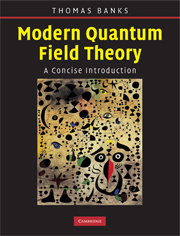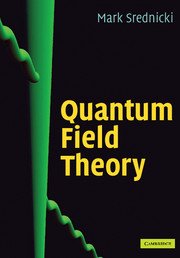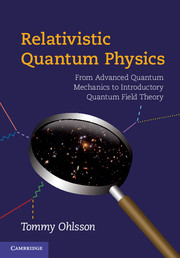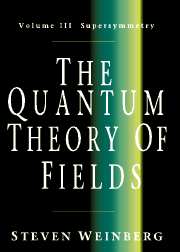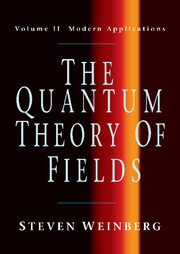Modern Quantum Field Theory
Presenting a variety of topics that are only briefly touched on in other texts, this book provides a thorough introduction to the techniques of field theory. Covering Feynman diagrams and path integrals, the author emphasizes the path integral approach, the Wilsonian approach to renormalization, and the physics of non-abelian gauge theory. It provides a thorough treatment of quark confinement and chiral symmetry breaking, topics not usually covered in other texts at this level. The Standard Model of particle physics is discussed in detail. Connections with condensed matter physics are explored, and there is a brief, but detailed, treatment of non-perturbative semi-classical methods. Ideal for graduate students in high energy physics and condensed matter physics, the book contains many problems,which help students practise the key techniques of quantum field theory.
- Contains a thorough treatment of quark confinement and chiral symmetry breaking - important topics not covered in many introductory texts
- Includes the Wilsonian approach to renormalization and effective field theory, providing a conceptual understanding of this crucial part of the subject
- Enables students to gain hands-on acquaintance with the key techniques of QFT through problem sets
Reviews & endorsements
'… an excellent textbook for a first encounter with quantum field theory and an essential reference for senior physicists. It presents the topic from a modern and streamlined perspective with beautiful and fresh explanations and clarifies many common misconceptions … Thomas Banks is one of the deepest theoretical physicists and one of the best teachers in the field.' Nathan Seiberg, Princeton University
'After reading this book, I'll never teach field theory in the same way again. Banks provides a modern, insightful treatment of the basic structure of quantum field theory, including anomalies, solitons and instantons. Perhaps most remarkable is his treatment of renormalization and the renormalization group, which … succeeds in presenting the conceptual framework … while providing the reader with the tools necessary for practical calculations.' Michael Dine, University of California, Santa Cruz
'… very approachable …' The Observatory
'Modern Quantum Field Theory: A Concise Introduction is a very ambitious and in many respects successful book. … Particularly appreciated was the modern treatment of the theory of renormalization, presenting the subject in a far more physical manner than many textbooks … the reader who takes time to make a full study of it will end up better and more deeply informed than they will from a study of most other introductory texts on the subject.' The Observatory
Product details
September 2008Hardback
9780521850827
280 pages
252 × 193 × 15 mm
0.76kg
25 b/w illus. 80 exercises
Available
Table of Contents
- 1. Introduction
- 2. Quantum theory of free scalar fields
- 3. Interacting field theory
- 4. Particles of spin one, and gauge invariance
- 5. Spin 1/2 particles and Fermi statistics
- 6. Massive quantum electrodynamics
- 7. Symmetries, Ward identities and Nambu Goldstone bosons
- 8. Non-abelian gauge theory
- 9. Renormalization and effective field theory
- 10. Instantons and solitons
- 11. Concluding remarks
- Appendices
- References
- Index.

